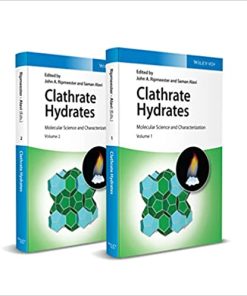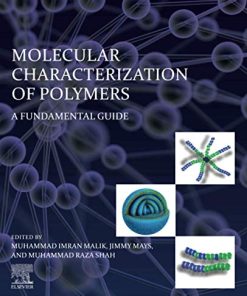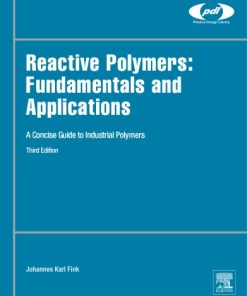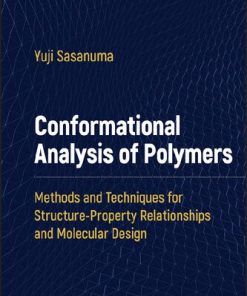(Ebook PDF) Molecular Characterization of Polymers A Fundamental Guide 1st Edition Muhammad Imran Malik, Jimmy Mays, Muhammad Raza Shan 012822598X 9780128225981 full chapters
$50.00 Original price was: $50.00.$25.00Current price is: $25.00.
Molecular Characterization of Polymers: A Fundamental Guide 1st Edition Muhammad Imran Malik, Jimmy Mays, Muhammad Raza Shan – Ebook PDF Instant Download/DeliveryISBN: 9780128225981, 012822598X
Full dowload Molecular Characterization of Polymers: A Fundamental Guide 1st Edition after payment.
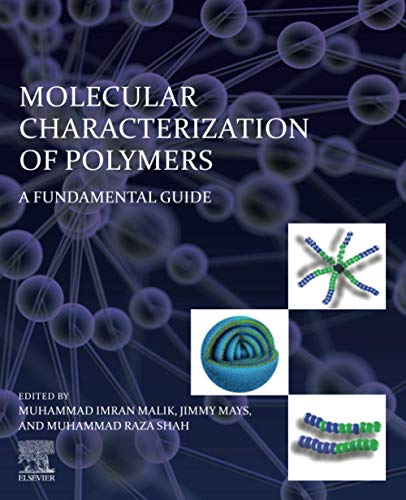
Product details:
ISBN-10 : 012822598X
ISBN-13 : 9780128225981
Author: Muhammad Imran Malik, Jimmy Mays, Muhammad Raza Shan
Molecular Characterization of Polymers presents a range of advanced and cutting-edge methods for the characterization of polymers at the molecular level, guiding the reader through theory, fundamentals, instrumentation, and applications, and supporting the end goal of efficient material selection and improved material performance.
Each chapter focuses on a specific technique or family of techniques, including the different areas of chromatography, field flow fractionation, long chain branching, static and dynamic light scattering, mass spectrometry, NMR, X-Ray and neutron scattering, polymer dilute solution viscometry, microscopy, and vibrational spectroscopy. In each case, in-depth coverage explains how to successfully implement and utilize the technique.
Molecular Characterization of Polymers: A Fundamental Guide 1st Table of contents:
Chapter 1: Basic principles of size exclusion and liquid interaction chromatography of polymers
Abstract
1.1: Liquid chromatography of polymers
1.2: Theory of polymer chromatography
1.3: Thermodynamics of polymer chromatography
1.4: Equipment and materials
1.5: Typical situations in liquid chromatography of complex polymers
1.6: Multidimensional separation of complex polymers
1.7: Typical applications of different modes of liquid chromatography of polymers
1.8: Coupled and hyphenated liquid chromatographic methods
1.9: Hyphenation of liquid chromatography with spectroscopic techniques
1.10: Summary
Chapter 2: Multidetector size exclusion chromatography of polymers
Abstract
2.1: Physical detectors
2.2: Chemical detectors
2.3: Commercially available detector and software solutions
2.4: Summary
Chapter 3: Temperature gradient interaction chromatography of polymers
Abstract
3.1: Separation mechanism
3.2: Instrumentation
3.3: Applications
3.4: Outlook
Chapter 4: Field-flow fractionation techniques for polymer characterization
Abstract
Acknowledgments
4.1: Separation mechanism and retention theory (normal mode)
4.2: Sample relaxation and overloading in FFF
4.3: Flow FFF
4.4: Thermal field-flow fractionation (ThFFF)
4.5: Summary
Chapter 5: Characterization of polyolefins
Abstract
5.1: Molecular heterogeneity of polyolefins
5.2: Crystallization-based fractionation techniques
5.3: Column chromatographic techniques
5.4: High temperature field-flow fractionation (HT-FFF)
5.5: Summary and outlook
Chapter 6: Analytical ultracentrifugation and combined molecular hydrodynamic approaches for polymer characterization
Abstract
6.1: Basic characteristics of macromolecules (end-to-end distance, radius of gyration, counter length, molar mass and polydispersity of fraction/samples, conformation, equilibrium chain rigidity)
6.2: Key hydrodynamic approaches in polymer science: The concept of hydrodynamic interactions of particles moving in a solvent
6.3: Sedimentation velocity: Sedimentation coefficient, Gralen coefficient, concentration dependence
6.4: Translational diffusion
6.5: Viscometry
6.6: Analytical ultracentrifugation for study of macromolecules
6.7: Partial specific volume
6.8: Consistency of the experimental data—Hydrodynamic invariants: Hydrodynamic invariant and sedimentation parameter
6.9: Molar mass, hydrodynamic size, evaluation of dispersity parameter from velocity sedimentation data
6.10: Conformation and conformational characteristics of macromolecules in solution
6.11: Summary and outlook
Chapter 7: Dilute solution viscometry of polymers
Abstract
7.1: Intrinsic viscosity and its measurement
7.2: Relationship between intrinsic viscosity and molecular weight
7.3: Estimation of polymer chain dimensions and conformational characteristics from intrinsic viscosity
7.4: Recent developments and applications in viscosity of polymer solutions
7.5: Conclusions and outlook
Chapter 8: Characterization of long-chain branching in polymers
Abstract
8.1: Use of NMR to detect and quantify long-chain branching
8.2: Characterization of long-chain branching via dilute solution properties
8.3: Characterization of long-chain branching by SEC with molecular weight/size-sensitive detectors
8.4: Recent advances in long-chain branching characterization
8.5: Conclusions and outlook
Chapter 9: Mass spectrometry of polymers
Abstract
Acknowledgments
9.1: Evolution of polymer ionization techniques
9.2: Modern mass analyzers for polymer characterization
9.3: Common MS/MS fragmentation techniques for polymer characterization
9.4: Ion mobility separations
9.5: Selected polymer mass spectrometry applications
9.6: Conclusions and outlook
Chapter 10: Vibrational spectroscopy of polymers
Abstract
10.1: Applications of vibrational spectroscopic analysis
10.2: Analysis of polymer blends; example PMMA-PEO blends and impact on technology
10.3: Analysis of heterophase polyurethanes
10.4: Characterization of polymer films on surfaces
10.5: Polymer aging—Characterization of structural transformations
10.6: Summary and outlook
Chapter 11: Characterization of polymers by NMR
Abstract
Acknowledgment
11.1: Basic principles of NMR spectroscopy
11.2: Application of NMR to polymers
11.3: Summary and outlook
Chapter 12: Characterization of polymers by dynamic light scattering
Abstract
Acknowledgment
12.1: The geometry of typical scattering experiments
12.2: Quick start for the DLS newcomer
12.3: Extracting quantitative information from DLS
12.4: How DLS works
12.5: DLS details: Assumptions and shortcuts we have made
12.6: Instrument design for photon correlation: Mandatory compromise
12.7: DLS lab: Just as important as the equipment
12.8: Depolarized dynamic light scattering
12.9: DLS in the overall scheme of things
12.10: Alternative methods
12.11: Tricks
12.12: Case studies
12.13: Conclusion
Chapter 13: Characterization of polymers by static light scattering
Abstract
Acknowledgments
13.1: Quick start for the SLS newcomer
13.2: Extracting quantitative information from the SLS experiment
13.3: How SLS works
13.4: SLS in the overall scheme of things
13.5: Copolymers and other multicomponent systems
13.6: Polydispersity
13.7: Design considerations
13.8: Circling back to DLS and combining it with SLS
13.9: Case studies
13.10: Conclusion
Chapter 14: Characterization of polymers by LenS3 multiangle light scattering
Abstract
14.1: The LenS3 instrument and design principles
14.2: Direct measurement of molecular weight
14.3: Absolute normalization process
14.4: Application of LenS3 for broadly polydisperse mixtures
14.5: Application of LenS3 to low-molecular weight monodisperse samples
14.6: Rg measurements using the LenS3
14.7: Analysis of biological samples using the LenS3
14.8: Summary and outlook
14.9: LenS3 related technical presentations and applications (as of April 2020)
Chapter 15: X-ray and neutron scattering of polymers
Abstract
Acknowledgment
15.1: Length scales accessible for neutrons, X-rays, and light
15.2: Comparison of X-rays and neutrons
15.3: Extracting structural information from scattering curves
15.4: The importance of scattering contrast
15.5: Specific examples of structure from scattering of polymers
15.6: Summary and outlook
Chapter 16: Microscopy of polymers
Abstract
16.1: Microscopy in the study of polymers
16.2: Optical microscopy
16.3: Transmission electron microscopy
16.4: Scanning electron microscopy
16.5: Atomic force microscopy
16.6: Summary and outlook
People also search for Molecular Characterization of Polymers: A Fundamental Guide 1st:
polymer characterization methods
polymer characterization
polymer characterization techniques
molecular weight polymers
a polymer is
You may also like…
Medicine - Neurology
Essentials of Osborn’s Brain: A Fundamental Guide for Residents and Fellows 1st Edition
Engineering - Social & Cultural Aspects of Technology
Chemistry - Analytical Chemistry
Uncategorized
Clathrate Hydrates: Molecular Science and Characterization, 2 Volumes John A. Ripmeester
Religion & Spirituality - Islam






